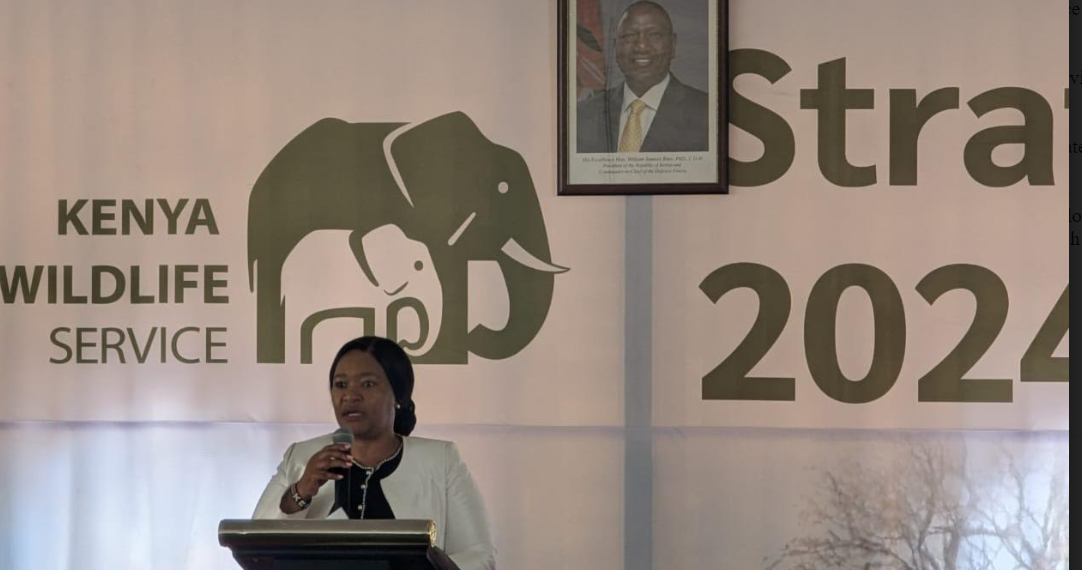Speaking during the launch held at KWS Headquarters in Nairobi, the Cabinet Secretary (CS) for Tourism and Wildlife, Rebecca Miano, revealed that the Strategic Plan embraces innovation, self-regulation, effective management, and delivery of quantifiable goals in an accountable manner.
“The plan identifies opportunities and mitigates risks while attentively aligning resources for use. If implemented to the latter, Kenya will display what modern biodiversity conservation can deliver to the world,” she said.
The CS noted that the plan is anchored on a science-guided and data-driven approach with a clear and accountable framework to ensure the long-term viability of the country’s wildlife heritage.
“The Strategic Plan approximates and aligns global, regional, and national blueprints, including the Sustainable Development Goals (SDGs), Vision 2030, and the Bottom-Up Economic Transformation Agenda (BETA),” she added.
Miano announced that the Ministry of Tourism and Wildlife remains committed to implementing policies and strategies embedded in the plan since the tourism and wildlife sectors are integral to the country’s socio-economic development plan.
“The Plan recognises the importance of ensuring that the benefits that come from tourism and wildlife conservation are shared equally across all stakeholders,” said the CS.
Kenya Wildlife Services Director General, Dr. Erustus Kanga, stated that the plan addresses various issues such as institutional capacity challenges, underexploited wildlife economies, declining wildlife populations, fragmented ecosystems, and inadequate community participation.
He revealed that each issue has a goal that would address it. Some of the goals include promoting a robust and high-performing organisation, expanding the wildlife economy, and creating a rich ecosystem with rich biodiversity.
“If we accomplish these goals, we are going to have flourishing wildlife populations across the globe,” he said.
It is projected that the implementation of the plan will cost approximately Sh98.3 billion over the five-year period, so KWS will develop and implement a resource mobilisation strategy that would help realise the financing required.
The strategy would have proposals such as currying out impactful fundraising events, operationalising the KWS endowment fund, and mobilising resources from the government.
The Plan has a total of 24 strategic objectives, with the main objectives being to increase species recovery programs, increase stakeholder participation in wildlife conservation, increase access to benefits from wildlife conservation, and enhance financial sustainability.
By Manu Mumba




